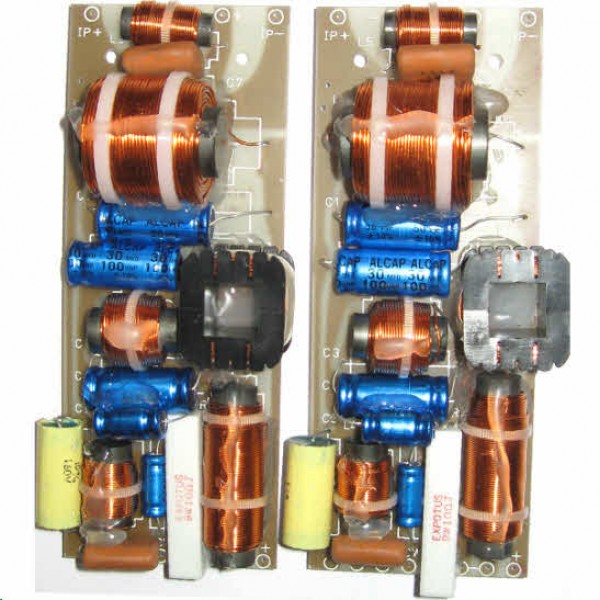Thank you everyone for your replies.
These particular R50s are from 1976, so 45 years old! Not quite as old as me

So they were exported to the US but probably in very small numbers and I expect that most have been scrapped by now. They do come up for sale here in the UK every now and then.
A previous owner replaced the crossovers with Falcon Acoustics Super Power units:

So these R50s are not suffering from dead caps and the like, but the Falcon Acoustics crossovers are not that great to my eye: a PCB, ferrite-core inductors, cheap resistors and electrolytic caps. I could reverse-engineer a schematic and build new point-to-point crossovers using audiophile-grade components but that doesn't work if the circuit design could be improved. These Falcon Acoustics crossovers do have a different schematic to the originals and change the crossover-point of some of the drivers (I do not remember the details).
I do not want to spend $$$ on new crossover components only to reproduce a circuit design that is non-optimal. I wish I knew how Falcon Acoustics arrived at their circuit design. Maybe I'll just give them a call and ask!
The surrounds of the all the drivers seem to be in good condition, remarkably.
The reason for all of this is that I think that they have much more potential to be released from the design. The bass has a solidity I have only every heard from transmission line designs and correctly-recorded vocals just sound wonderful. As I write, Ella Fitzgerald is actually in my sitting room. Spacious and simple music does sound clear, realistic and with great dynamics (for example, Art Pepper and other jazz recordings from the 50s and 60s) but things fall apart when the music becomes complex or over-produced. David Bowie's
Black Tie White Noise sounds like a mess when the layers pile on, yet I have heard this album sound fine.
What I am seeking is better separation in the mix, with the ability to follow individual instruments and also better soundstaging.